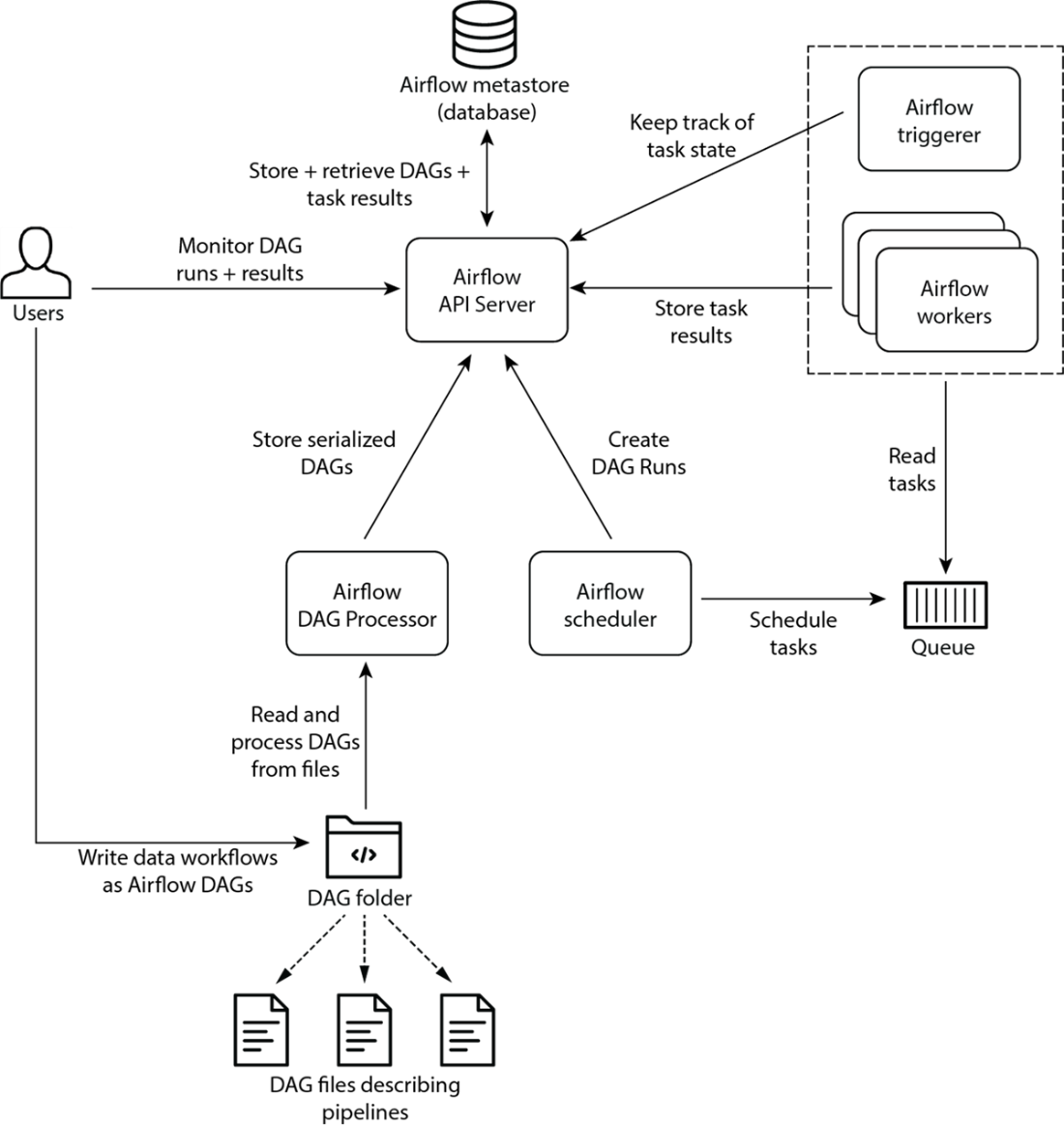15 Operating Airflow in production
This chapter covers
- Dissecting the Airflow components
- Configuring Airflow to scale horizontally using different executors
- Monitoring the status and performance of Airflow visually
- Sending out alerts in case of task failures
Up to now, we’ve mainly focused on the user side of Airflow: building data pipelines. Going forward, we’ll switch gears and discuss what it takes to run and deploy Airflow from an operations perspective. A general understanding of concepts such as (distributed) software architecture, logging, monitoring, and alerting is assumed. However, no specific technology is required.
15.1 Revisiting the Airflow architecture
Back in chapter 1, we showed the Airflow architecture displayed in Figure 15.1.
At a minimum, Airflow consists of a few components:
- API server
- Scheduler
- Dag Processor
- Database (also known as Metastore)
- Workers
- Triggerer (optional component, required when working with deferrable operators)
- Executor (not in the image)
Figure 15.1 High-level Airflow architecture

The API server and scheduler are both Airflow processes. The database is a separate service you must provide to Airflow for storing metadata from the API server and scheduler. A folder with DAG definitions must be accessible by the DAG Processor.